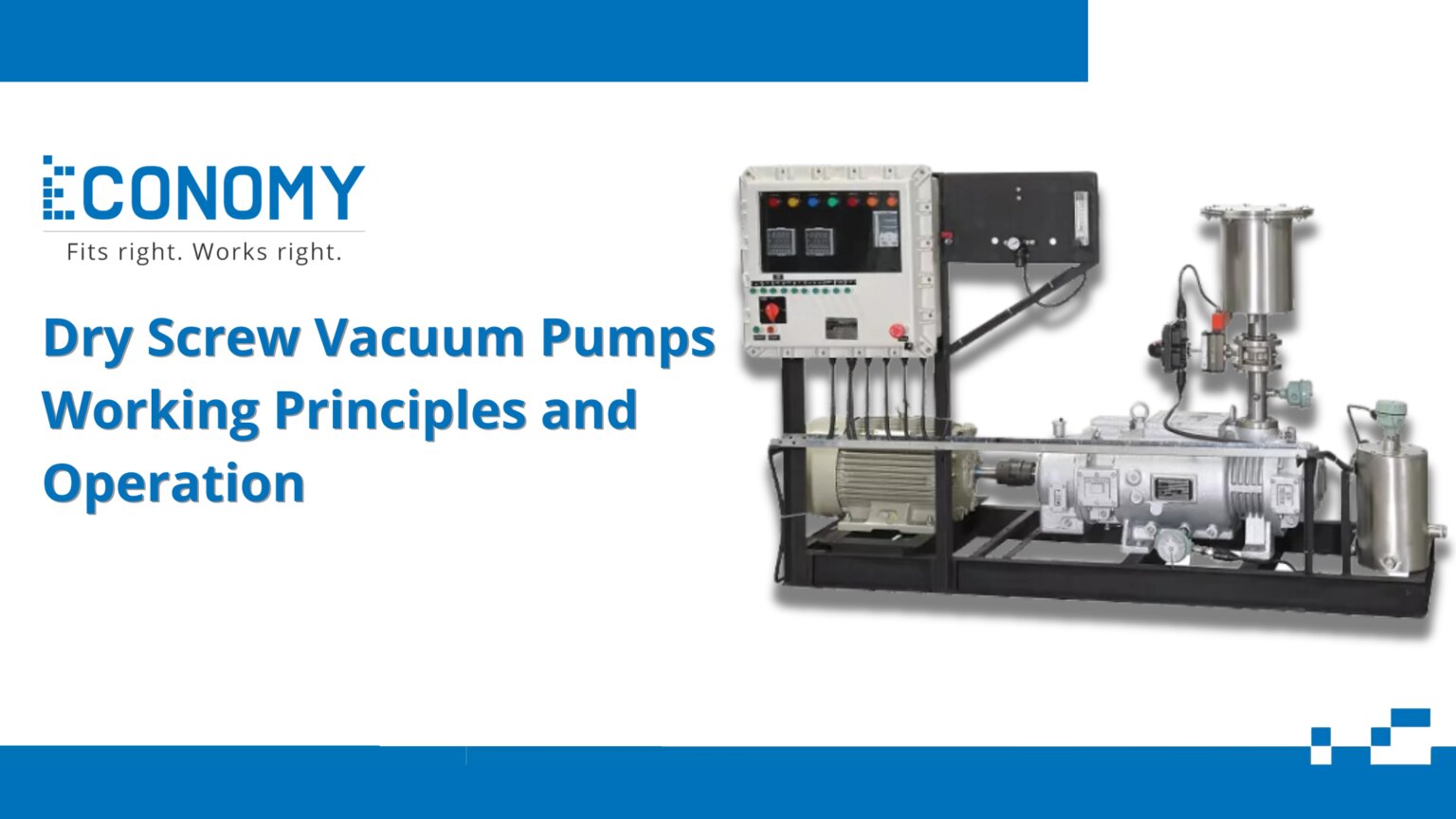Dry screw vacuum pumps are essential tools in many industries, providing efficient and clean vacuum generation. They operate without the use of oil or other liquids, making them suitable for applications where contamination must be avoided. This article explores the basic principles of operation, components, and the advantages and disadvantages of dry screw vacuum pumps.
Basic Principles and Operation of Dry Screw Vacuum Pumps
Dry screw vacuum pumps work based on the principle of positive displacement. The core components are two screw-shaped rotors that rotate in opposite directions inside a chamber. These rotors are designed with precise clearances to avoid contact with each other and the casing, which is critical for maintaining a dry, lubricant-free environment.
Steps of Operation
-
Gas Inlet:
- Gas enters the pump through an inlet port.
- As the rotors turn, gas is drawn into the spaces between the screw threads and the pump casing.
-
Gas Transportation:
- The rotors’ rotation transports the gas towards the discharge side.
- The design of the screws causes a progressive reduction in volume, which compresses the gas.
-
Gas Compression:
- The continuous rotation of the screws ensures the gas is steadily compressed as it moves through the pump.
- This compression increases the pressure of the gas before it is expelled.
-
Gas Discharge:
- The compressed gas is discharged through an exhaust port.
- Depending on the application, this gas can be processed further or released safely.
Components of Dry Screw Vacuum Pumps
Understanding the key components of dry screw vacuum pumps helps in appreciating their design and functionality:
-
Rotors:
- The rotors are the main working parts of the pump. Made from high-strength materials, they feature a screw-like design.
- Precision engineering ensures they operate without making contact, which minimizes wear and prevents contamination.
-
Timing Gears:
- These gears synchronize the rotation of the rotors, ensuring they remain in perfect alignment.
- Proper timing is essential to maintain the pump’s efficiency and prevent mechanical failure.
-
Pump Casing:
- The casing encloses the rotors and creates the chamber in which the gas is compressed.
- It is designed to withstand the pressures and temperatures involved in the pumping process.
-
Inlet and Exhaust Ports:
- The inlet port allows gas to enter the pump, while the exhaust port expels the compressed gas.
- These ports are strategically positioned to maximize efficiency and throughput.
-
Seals and Bearings:
- High-quality seals are used to prevent leaks and maintain vacuum integrity.
- Bearings support the rotors and allow smooth, frictionless operation.
Advantages and Disadvantages of Dry Screw Vacuum Pumps
Like all technologies, the advantages and disadvantages of dry screw vacuum pumps should be considered when selecting them for specific applications.
Advantages
-
Oil-Free Operation:
- The absence of oil or lubricants in the pumping mechanism eliminates the risk of contamination, making these pumps ideal for sensitive applications such as pharmaceuticals and food processing.
-
High Efficiency:
- The precision design of the rotors and the non-contact operation result in low energy losses, providing high operational efficiency.
-
Low Maintenance:
- Reduced wear and tear due to the lack of contact between moving parts mean lower maintenance requirements and longer service life.
-
Versatility:
- These pumps can handle a wide range of gases, including corrosive and hazardous substances, making them suitable for diverse industrial applications.
Disadvantages
-
Initial Cost:
- Dry screw vacuum pumps can be more expensive upfront compared to other types of vacuum pumps. The advanced materials and precision engineering contribute to this higher initial cost.
-
Complexity:
- The precise design and the requirement for exact synchronization of the rotors add to the complexity of these pumps, which can make them more challenging to repair and service.
-
Noise and Vibration:
- These pumps can generate more noise and vibration compared to some other types of vacuum pumps, which may require additional soundproofing or isolation measures in certain settings.
Conclusion
Dry screw vacuum pumps are a crucial component in many industries, offering efficient, clean, and reliable vacuum generation without the risk of contamination. Understanding their operation, components, and the balance of advantages and disadvantages can help in selecting and maintaining the right pump for your specific needs. Whether in chemical processing, pharmaceuticals, or semiconductor manufacturing, dry screw vacuum pumps provide the performance and reliability that modern industrial applications demand.





